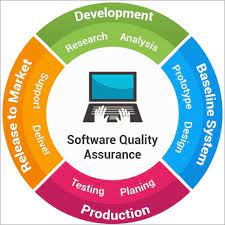The Role of QA in Ensuring Quality Software Development
The Importance of Quality Assurance in Software Development
In the fast-paced world of software development, ensuring the quality of a product is crucial to its success. This is where Quality Assurance (QA) plays a vital role. QA in software development involves a systematic process of checking and testing software to identify and fix any issues before it is released to the end-users.
Why is QA Important?
Ensures Product Reliability: QA helps in identifying and fixing bugs and errors in the software, ensuring that the final product works as intended without any unexpected issues.
Enhances User Experience: By conducting thorough testing, QA ensures that the software meets user expectations in terms of functionality, performance, and usability, leading to a positive user experience.
Saves Time and Money: Identifying and fixing bugs early in the development process through QA can save significant time and resources that would otherwise be spent on resolving issues post-release.
The Role of QA Engineers
QA engineers are responsible for designing test plans, executing tests, analyzing results, and working closely with developers to address any identified issues. They play a critical role in maintaining the quality standards of the software throughout its development lifecycle.
Types of Testing in QA
There are various types of testing conducted as part of QA processes, including:
- Functional Testing
- Performance Testing
- Security Testing
- User Acceptance Testing (UAT)
Conclusion
Quality Assurance is an essential component of software development that ensures high-quality products are delivered to users. By investing in robust QA processes and skilled QA engineers, companies can enhance their reputation, reduce risks, and ultimately deliver better software products.
6 Essential QA Tips for Effective Software Development
- Define clear acceptance criteria for each feature
- Perform thorough testing at each stage of development
- Automate repetitive test cases to save time and effort
- Collaborate closely with developers to identify and resolve issues early
- Document bugs and issues clearly for easy tracking and resolution
- Regularly review and update test cases to ensure comprehensive coverage
Define clear acceptance criteria for each feature
In software development, defining clear acceptance criteria for each feature is a crucial tip in ensuring effective Quality Assurance (QA) practices. Acceptance criteria serve as measurable guidelines that help both developers and QA teams understand the expected behavior and functionality of a feature. By establishing specific criteria upfront, such as user interactions, performance benchmarks, and error handling scenarios, teams can streamline testing processes, identify potential issues early on, and ultimately deliver high-quality software that meets user expectations.
Perform thorough testing at each stage of development
Performing thorough testing at each stage of development is a critical tip in software development Quality Assurance (QA). By conducting comprehensive testing throughout the development process, potential issues can be identified and addressed early, reducing the likelihood of costly errors later on. This proactive approach helps ensure that the final product meets quality standards and functions as intended, leading to a more efficient and successful software release.
Automate repetitive test cases to save time and effort
Automating repetitive test cases in software development is a valuable tip that can significantly save time and effort. By leveraging automation tools and scripts to execute routine tests, QA teams can focus their energy on more complex and critical testing tasks. This not only speeds up the testing process but also reduces the likelihood of human errors, leading to more reliable and efficient software development cycles. Embracing automation in QA practices allows teams to allocate resources effectively and ensure that software products are thoroughly tested while maximizing productivity.
Collaborate closely with developers to identify and resolve issues early
Collaborating closely with developers to identify and resolve issues early is a crucial tip in quality assurance for software development. By fostering a strong partnership between QA engineers and developers, teams can proactively address potential issues during the development process, leading to quicker bug fixes, improved product quality, and ultimately a more seamless user experience. This collaborative approach not only streamlines the testing process but also promotes a culture of continuous improvement and teamwork within the development team.
Document bugs and issues clearly for easy tracking and resolution
Documenting bugs and issues clearly is a crucial tip in quality assurance for software development. By providing detailed descriptions of identified problems, including steps to reproduce them and any relevant information, teams can track and prioritize issues effectively. Clear documentation also facilitates smoother communication between QA engineers and developers, leading to quicker resolution of bugs and overall improved product quality.
Regularly review and update test cases to ensure comprehensive coverage
Regularly reviewing and updating test cases is a critical practice in software development Quality Assurance (QA). By ensuring that test cases are regularly reviewed and updated, QA teams can maintain comprehensive coverage of the software’s functionality. This practice helps in identifying any gaps in testing and ensures that all aspects of the software are thoroughly tested. Additionally, updating test cases based on changes in requirements or new features helps in keeping the testing process relevant and effective. Overall, this tip plays a key role in enhancing the quality of software products and minimizing the risk of undetected issues.




